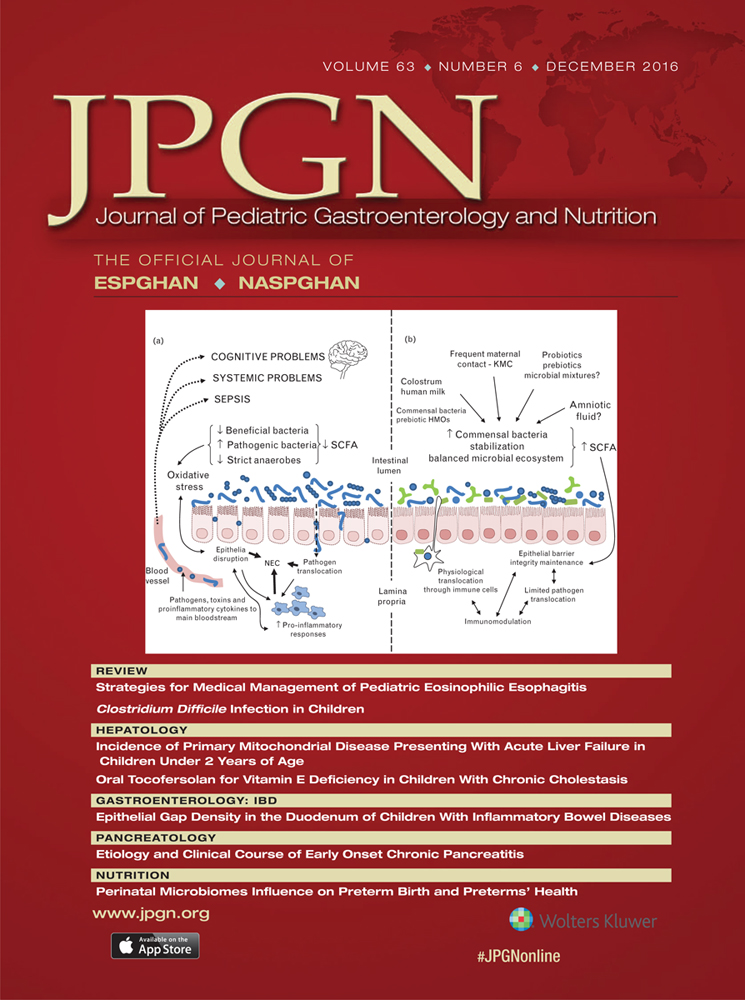Complementary and Alternative Medicine Use in Children With Inflammatory Bowel Diseases
A Single-Center Survey
This project was supported in part by the Crohn's and Colitis Foundation of America (CCFA) Summer Student Fellowship Award and the Wright State University Boonshoft School of Medicine.
The authors report no conflicts of interest.
ABSTRACT
Objectives:
The prevalence of inflammatory bowel diseases (IBD) and use of complementary and alternative medicine (CAM) are both common and increasing. The definition of CAM therapy among both practitioners and patients is variable. The aim of our study was to update our understanding of how pediatric IBD patients use, perceive, and define CAM therapies.
Methods:
We surveyed families of patients with IBD followed in the Gastroenterology Division at Nationwide Children's Hospital in summer 2014 during a routine clinic visit. The survey included questions about the following demographic and disease information; use and side effects associated with prior conventional therapies (CT); and attitudes toward, and use of CAM.
Results:
The questionnaire was completed by 104 of 118 patients approached (14 ± 3 years; 43% women). Patients had previously used an average of 3 CT. CAM therapy was used by 84% of patients surveyed, although only 24% of patients/families considered themselves to be using CAM. Common CAM therapies included vitamins/supplements, stress management techniques, and/or dietary changes. Factors associated with using specific CAM therapies included self-reported prior CT-related side effects (P < 0.01) and moderate/severe disease activity (P < 0.01). Most families (77%) desired to learn more about CAM.
Conclusions:
Patients seen in a tertiary care center for pediatric IBD frequently integrated CAM therapies into their treatment regimen. Patients with prior side effects from CT or more severe disease were more likely to use CAM. Given the high prevalence of CAM use, pediatric gastrointestinal physicians should be knowledgeable and open to discussions about CAM therapies with their patients.




